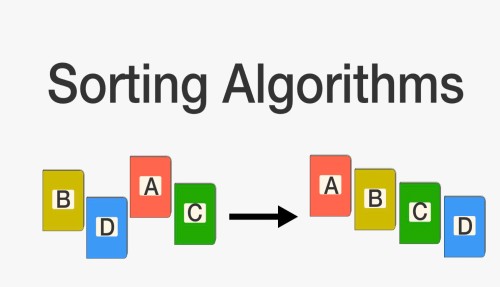Sorting Algorithms are one of the most important computer science topics. They allow us to arrange data in a certain order, making it easier to access and use. There are many different sorting algorithms, each with its own strengths and weaknesses. The most commonly used sorting algorithms include Bubble Sort, Selection Sort, Insertion Sort, Merge Sort, Quick Sort, Heap Sort, Counting Sort, Radix Sort, and Bucket Sort. In this blog post, we will take a look at what sorting algorithms are, and how they work with examples.
Bubble Sort is a sorting algorithm that involves repeatedly swapping adjacent elements if they are out of order. This process is repeated until the list is sorted. For example, let’s consider the list [2, 3, 1, 5, 4]. We can use Bubble Sort to sort this list into ascending order. First, we compare 2 and 3. Since 2 is greater than 3, we swap them. Then, we compare 3 and 1. Again, since 3 is greater than 1, we swap them. We continue this process until the list is completely sorted; which would look like [1, 2, 3, 4, 5].
Selection Sort works by repeatedly finding the minimum element from the unsorted part of the list, and then placing it at the beginning. For example, consider the same list as before: [2, 3, 1, 5, 4]. To sort this list using Selection Sort, we first identify the smallest element. In this case, it is 1. Then, we place it at the beginning of the list, giving us [1, 2, 3, 5, 4]. We then find the next smallest element (2) and move it to the beginning of the list, so our list now looks like [2, 1, 3, 5, 4]. We continue this process until the list is sorted; so the final result would be [1, 2, 3, 4, 5].
Insertion Sort works by searching for an element to insert into the already sorted part of the list. For example, consider the list [3, 2, 1, 4, 5]. To sort this list using Insertion Sort, we start by picking 2 as the element to insert into the sorted part. Since 2 is smaller than 3, we move 3 to the right and insert 2. Then, we pick 1 as the next element to insert. Since 1 is smaller than 2, we move 2 one step to the right and insert 1. This process is repeated until the list is sorted; so the final result would be [1, 2, 3, 4, 5].
Merge Sort works by splitting the list into two halves and then merging them back together in a sorted order. For example, consider the list [7, 2, 5, 4, 1]. To sort this list using Merge Sort, we first split it into two halves: [7, 2, 5] and [4, 1]. We then sort each half individually, so our list now looks like [2, 5, 7] and [1, 4]. Finally, we merge the two halves back together, giving us our sorted list: [1, 2, 4, 5, 7].
Quick Sort is another popular sorting algorithm. Like Merge Sort, it works by splitting the list into two halves and then sorting them. However, unlike Merge Sort, Quick Sort uses a pivot element to determine where to split the list. For example, let’s consider the list [8, 3, 9, 1, 5]. To sort this list using Quick Sort, first we select the pivot element – in this case, we’ll choose 8. Then, we divide the list into two halves – the lower half, containing all the elements that are less than or equal to 8, and the upper half, containing all the elements that are greater than 8. This gives us [3, 1, 5] and [9, 8]. Finally, we recursively sort each half and combine them back together; which would give us the sorted list: [1, 3, 5, 8, 9].
Heap Sort is a sorting algorithm that uses the concept of the Heap data structure, which is a variant of a binary tree. It works by creating a heap from the list and then repeatedly removing the root node from the heap and inserting it into the sorted list. For example, consider the list [10, 8, 15, 6, 4, 13]. To sort this list with Heap Sort, we start by creating a heap from the list, which would look like this:
4
/ \
8 10
/ \ / \
6 15 13Next, we repeatedly remove the root node from the heap (4) and insert it into the sorted list. We then adjust the heap so that the highest priority element becomes the root. In this way, we build up an increasingly sorted list. The sorted list would look like this: [4, 6, 8, 10, 13, 15].
Counting Sort is a sorting algorithm that uses the values of the elements in the list to sort them. For example, let’s consider the list [3, 1, 2, 4]. To sort this list using Counting Sort, we create an array with the size of the largest element in our list (in this case, 4). We then count the number of occurrences of each element in the list, and store it in the corresponding bucket in our array. So our array would look like this: [0, 1, 1, 0, 1]. From here, we can easily construct the sorted list, which would be [1, 2, 3, 4].
Radix Sort is a sorting algorithm that works by sorts the elements of the list based on their radix (in other words, their numerical value). For example, let’s consider the same list as before: [3, 1, 2, 4]. To sort this list using Radix Sort, we start by looking at the rightmost digit of each element. In this case, the rightmost digit of 3 is 3, the rightmost digit of 1 is 1, the rightmost digit of 2 is 2, and the rightmost digit of 4 is 4. From here, we can construct the sorted list, which would be [1, 2, 3, 4].
Finally, Bucket Sort is a sorting algorithm that uses buckets to sort elements. It works by dividing the elements of the list into multiple buckets, and then sorting each bucket individually. For example, let’s consider the list [7, 3, 1, 9, 5]. To sort this list using Bucket Sort, we first divide it into four buckets: 1-2, 3-4, 5-6, and 7-8. Then, we sort each bucket individually. So our sorted list would be [1, 3, 5, 7, 9].
In conclusion, sorting algorithms are one of the most important topics in computer science. There are many different sorting algorithms, each with their own strengths and weaknesses. Examples of popular sorting algorithms include Bubble Sort, Selection Sort, Insertion Sort, Merge Sort, Quick Sort, Heap Sort, Counting Sort, Radix Sort, and Bucket




